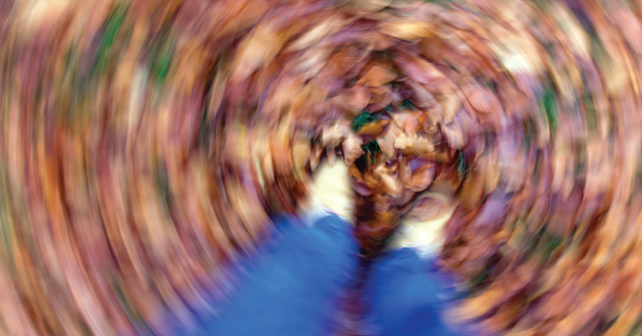
Posterior circulation strokes make up 20 percent of all strokes but account for 40 percent of stroke misdiagnoses.1 Vertigo and dizziness are often the hallmarks, but distinguishing a central (brain) from a peripheral (vestibular) etiology is difficult. Dizziness is especially tricky, with up to 40 percent of strokes presenting with dizziness being missed.2 Vertebral artery dissection (VAD) is notoriously elusive, producing anatomically scattered symptoms that may stutter for days.3
Explore This Issue
ACEP Now: Vol 43 – No 04 – April 2024Case 1: Posterior Stroke Presenting as Food Poisoning
A 42-year-old man presents to the emergency department (ED) with sudden onset of severe vertigo, headache, nausea, and vomiting after eating Italian food. His blood pressure is 190 over 115. On exam he is in moderate distress, is pressing his eyes shut, and has horizontal nystagmus (not further characterized by the emergency physician). His neurological exam is described as normal, but gait and truncal ataxia are not tested. He is assumed to have benign positional vertigo, is treated with IV Reglan, Benadryl, and Valium, but is not improved two hours later. A neurologist is consulted and a CT shows a large left cerebellar infarct. Craniotomy is ultimately required to relieve brainstem compression.
Case 2: Posterior Stroke Presenting as Intoxication or Malingering
A 62-year-old man awakens from sleep with a headache, trouble speaking, and inability to move his arms or legs, all witnessed by his partner. Symptoms last 10-15 minutes. On arrival in the ED, symptoms have resolved except for the headache. His neurological exam on arrival is documented as normal. Although his ETOH or blood alcohol level is zero, the consulting neurologist concludes that the patient’s symptoms are likely related to drinking wine the night before. At shift change the oncoming emergency physician re-evaluates the patient and notes direction-changing horizontal nystagmus. MRI/MRA reveals a right VAD. The patient is anti-coagulated and does well.
Takeaways
Nystagmus can be complex; its presence in a patient with any neuro symptoms should raise the possibility of a posterior circulation stroke. If nystagmus is the sole finding, we teach that the only potentially “benign” form is horizontal, unidirectional and extinguishable.1
Gait is key. If unable to test gait, check truncal ataxia by sitting the patient up.
VADs are notoriously difficult to diagnose. Symptoms, it is worth repeating, may be scattered, non-anatomic and stutter for days. Worse, odd symptoms like transient quadriplegia or phonation difficulty may be ascribed to malingering or intoxication. Posterior circulation strokes, especially VADs, may manifest with only a single neurological abnormality, so a thorough neurologic exam is critical.
Pages: 1 2 3 | Single Page




No Responses to “How Not To Miss Posterior Circulation Stroke”